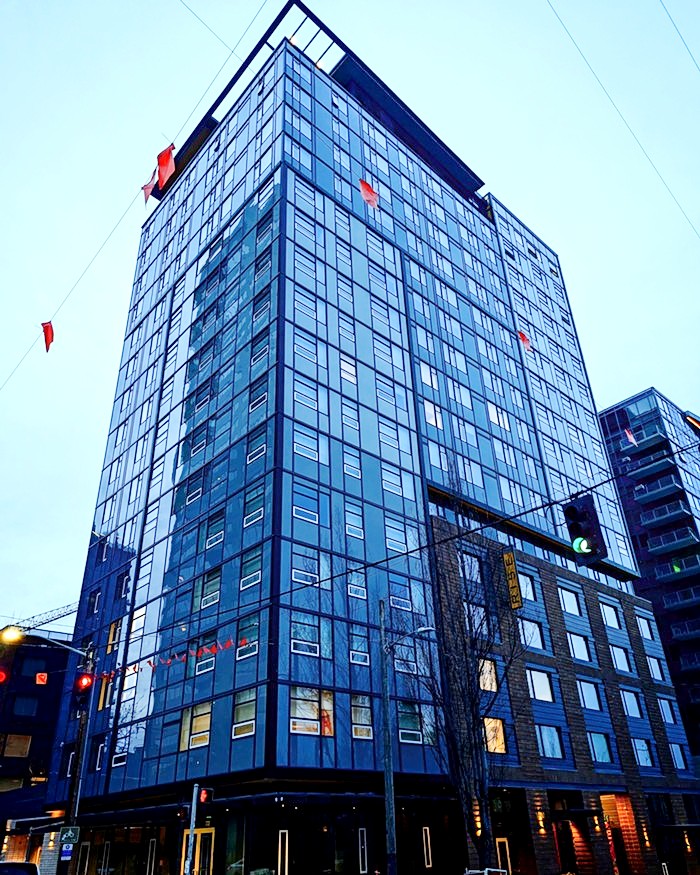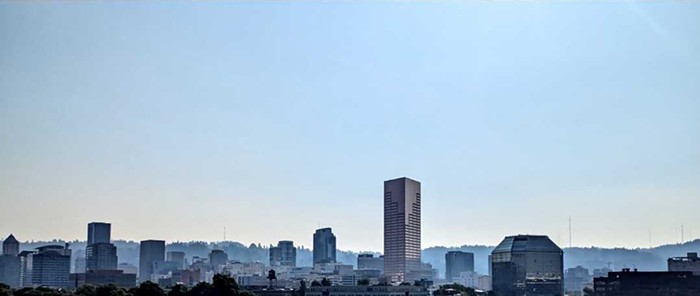I was at a talk by Scott Lawrimore at Cornish College of the Arts the other day when one of the college's art historians raised her hand. To paraphrase her question: You seem like a clever operator in the art world, but what about the larger world? How does your gallery deal with social issues? The war? The environment? (The night before, Barack Obama and Hillary Clinton had debated over flag pins and who loves America the most. All day there was a clamor for substance.)
To paraphrase Lawrimore's answer: I ask myself the same thing sometimes, and, well, it's complicated. But the Henry Art Gallery—they've been doing it right, he said. They've been quietly pursuing topical issues for several seasons now.
My first thought was that in the fall of 2007, the Henry packaged a few events around the subject of war, in conjunction with explicitly war-related exhibitions by Kim Jones and An-My Lê. This sort of thing, while potentially valuable, always strikes me a little like Black History Month—it's not a sustained focus. But flashing back over several exhibitions, here's the art that came to mind: Walid Raad's photographs from degraded negatives picturing a violently degraded Beirut, Lê's portraits of battle rehearsals and reenactments, Kader Attia's sculptures with thin but insistent boundaries and borderlines, Jones's doughy but warlike Mudman character, and Dawn Cerny's bleeding paper soldiers and waiting room stocked with tissues. Put together like that, they coalesce into a group show in the mind. Lawrimore is right. In at least five separate exhibitions, the Henry has been sneakily, steadily political, especially concerning the prevailing subjects of violence and war. What's amazing is how nondogmatic it's all been.
That's partly because the artists themselves aren't protesting. (In fact, the artist Kelly Mark held an antiprotest at the Henry in 2006, leading cries of "What do we want? Nothing! When do we want it? Now!") Instead, artists are expressing a complex sense of dislocation. Lê, a Vietnamese-born artist, took photographs of Vietnam War reenactors and contemporary American military training camps (rather than shooting the real action overseas) as a way to comment on the Pentagon's new program of "embedding" journalists—an attempt to prevent the sort of powerfully chaotic, "disloyal" images that came from free-roaming photojournalists during Vietnam. In her black-and-white images of soldiers, Lê is conspicuously provoking our desire for fact, but providing only fiction.
Cerny, a Seattle artist whose solo installation is up at the Henry through April 27, was also in special, particular proximity to the war: so close, yet so far. While she was dreaming up her first museum show, her brother was in training to go to war. She called her show We're All Going to Die (Except for You), a title that could be directed to her brother, as a sending-off wish. It's also an expression—along with her watercolors of T-shirts bearing darkly cartoonish skeleton logos for heavy-metal bands—of the basic disbelief in death that's at the heart of youth-driven American culture. It raises a new question about military involvement: How would we all think about war if older people were the ones fighting?
Cerny's installation is in two galleries, one of which she has turned into a waiting area. It's a fitting depiction of the state of many Americans, living adjacent to trauma but not in it, perched on an uncertain edge. The dead are in the next room.
Last fall was Kim Jones's exhibition of drawings, sculptures, video, installation, and performance, which hit hardest of all the shows. Jones has a closer and more potentially explosive sense of violence, but, like the other artists, he is also transfixed in the face of it.
His drawings are built up in layers of addition and subtraction over decades; some depict battles with no beginning or end in sight, drawn in simplistic pencil marks that stand for tanks and battlements. The marks can be endlessly erased and redrawn elsewhere as they move around in the firefight. Jones has been making these war drawings since he was a kid. He says it's possible one of them will have an ending, but it's never happened yet.
Since these American wars broke out in 2001, no single exhibition has come to define them, but political content has leaked its way into every major event, including, most prominently, last summer's Venice Biennale, which included pointed photographs of war zones and the most famous of the few contemporary artworks that deal directly with Iraq: Emily Prince's map of the United States, dotted with pins that connect to Prince's humble drawings of each of the dead American servicemen and women. Historical shows have even become part of the conversation, best of all being John Elderfield's exhibition of Manet's portraits of the execution of Emperor Maximilian of Mexico at the Museum of Modern Art in 2006. When it comes to Seattle museums, though, the Henry is alone. It has been the place to go if you want to consider your contested place in the world while at the same time considering serious art.
When Robert Storr was in Seattle to talk about Jones's work, he pointed out that the structure of sticks that Jones wears on his back when he performs the frightening- looking Mudman character is as much a threat to others as it is a crown of thorns for the artist. In all of his work, Jones, who once was a soldier in Vietnam and who burned rats as a reenactment of the behavior of GIs when he returned, is a sharp poke at the world but also an exposed, tender surface. That sounds like an apt description of the contemporary American on the world stage. ![]()


















